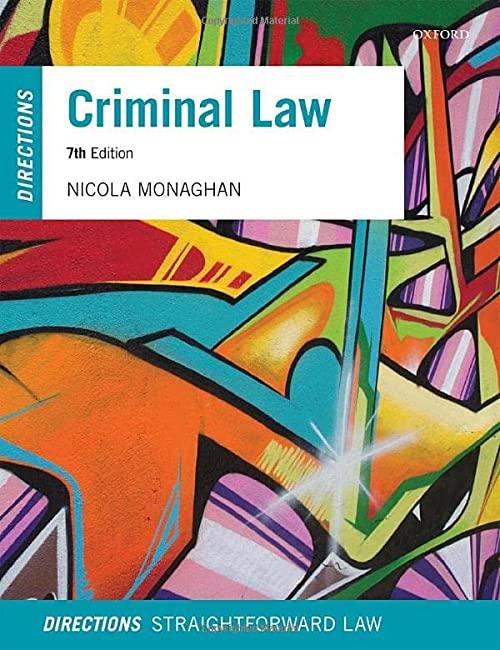
1. why did the EPA resist regulation over motor vehicle emissions??2. How was Massachusetts injured as a result of the emissions?3. Can the EPA still resist ?regulating the area? How?Note: all questions are based off of the U.S. Supreme Court case "Massachusetts v. EPA 549 U.S. 497 (2007)Thanks for all your help!!!
* * * 693 according to petitioners uncontested affidavits-the rise in sea levels associated with global warming has already harmed and will continue to harm Massachusetts. The risk of catastrophic harm, thou + That risk would be reduced to some extent if petitioners received the relief they seek. We therefore hold that petitioners have standing to challenge EPA's denial of their rulemaking petition. On the merits, the first question is whether $ 202(a)(1) of the Clean Air Act authorizes EPA to regulate greenhouse gas emissions from new motor vehicles in the event that it forms a "judgment" that such emissions c change. We have little trouble concluding that it does. In relevant part, $ 202(a)(1) provides that EPA "shall by regulation prescribe . . . standards applicable to the emission of any air pollutant from any class or classe Zoom In mate vehicles or new motor vehicle engines, which in [the Administrator's] judgment cause, or contribute to, air pollution which may reasonably be anticipated to endanger public health or welfare." Because EPA believes that Congress did not intend it to regulate substances that contribute to climate change, the agency maintains that carbon dioxide is not an "air pollutant" within the meaning of the provision. The statutory text forecloses EPA's reading. The Clean Air Act's sweeping definition of "air pollutant" includes "any air pollution agent or combination of such agents, including any physical, chemical . . substance or matter which is emitted into or otherwise enters the ambient air. ..." On its face, the definition embraces all airborne compounds of whatever stripe, and underscores that intent through the repeated use of the word "any." Carbon dioxide, methane, nitrous oxide, and hydrofluorocarbons are without a doubt "physical [and] chemical . . . substance[s] which [are] emitted into . . the ambient air." The statute is unambiguous. EPA finally argues that it cannot regulate carbon dioxide emissions from motor vehicles because doing so would require it to tighten mileage standards, a job (according to EPA) that Congress has assigned to DOT [Department of Transportation]. But that DOT sets mileage standards in no way licenses EPA to shirk its environmental responsibilities. EPA has been charged with protecting the public's "health" and "welfare," a statutory obligation wholly independent of DOT's mandate to promote energy efficiency. The two obligations may overlap, but there is no reason to think the two agencies cannot both administer their obligations and yet avoid inconsistency. While the Congresses that drafted $ 202(a)(1) might not have appreciated the possibility that burning fossil fuels could lead to global warming, they did understand that without regulatory flexibility, changing circumstances and scientific developments would soon render the Clean Air Act obsolete. . . . Because greenhouse gases fit well within the Clean Air Act's capacious definition of "air pollutant," we hold that EPA has the statutory authority to regulate the emission of such gases from new motor vehicles. The alternative basis for EPA's decision-that even if it does have statutory authority to regulate greenhouse gases, it would be unwise to do so at this time-rests on reasoning divorced from the statutory text. While the statute does condition the exercise of EPA's authority on its formation of a "judgment," that judgment must relate to whether an air pollutant "cause[s], or contribute[s] to, air pollution which may reasonably be anticipated to endanger public health or welfare. . EPA no doubt has significant latitude as to the manner, timing, content, and coordination of its regulations with those of other agencies. But once EPA has responded to a petition for rulemaking, its reasons for action of inaction must conform to the authorizing statute. Under the clear terms of the Clean Air Act, EPA can avoid taking further action only if it determines that greenhouse gases do not contribute to climate change or if it provides some reasonable explanation as to why it cannot or will not exercise its discretion to determine whether they do. EPA has refused to comply with this clear statutory command. Instead, it has offered a laundry list of reasons not to regulate. For example, EPA said that a number of voluntary Executive Branch programs already provide an effective response to the threat of global warming, that regulating greenhouse gases might impair the President's ability to negotiate with "key developing nations" to reduce emissions, and that curtailing motor-vehicle emissions would reflect "an inefficient, piecemeal approach to address the climate change issue .. ." In short, EPA has offered no reasoned explanation for its refusal to decide whether greenhouse gases cause or contribute to climate change. Its action was therefore "arbitrary, capricious, or otherwise not in accordance with law.". We hold only that EPA must ground its reasons for action or inaction in the statute. Reversed and remanded. 1. Why did the EPA resist regulation over motor vehicle emissions? 2. How was Massachusetts injured as a result of the emissions? 3. Can the EPA still resist regulating the area? How








